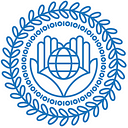Locally-led Development Will Require Tectonic Shift in Donor Culture and Operations
Locally-led is the recent international development buzzword, and movements including #ShiftthePower and “decolonize aid” abound. Last November, Ambassador Power, USAID Administrator, reinvigorated this agenda by committing to obligating 25% of all assistance to local partners within the next four years and 50% by the end of the decade. While the concept of locally-led development has been gaining traction over the years and some progress has been made, there are still significant cultural, operational, and policy challenges to overcome barriers.
What is locally-led development? It is not a single approach, but a range of ways donors, partners, and communities shift decision-making power and program responsibility to local actors. While locally-led development is vital in all sectors, local peacebuilders are critical to understanding the needs and values of communities impacted by conflict, violence, and fragility.
It’s been tried before, but gains are modest. In the last few years, bi and multilateral donors have adopted laws and policies that call for locally-led development, including the Global Fragility Act, the United Nations Sustaining Peace Agenda, the Women, Peace, and Security Act, the UN Sustaining Peace Agenda, and the World Bank Group Strategy for Fragility, Conflict, and Violence. However, to date these laws and policies have not significantly moved the needle on this agenda. Former U.S. administrations have also tried to advance locally-led development. The Obama Administration instituted USAID Forward that pledged to obligate 30% of assistance to local entities. The Trump Administration instituted the Journey to Self-Reliance and the New Partnerships Initiative. While these initiatives made gains, the results were modest.
One of the most significant challenges to advance locally-led development centers around donor procurement mechanisms. Procurement processes are burdensome for local organizations to navigate due to complex application processes that require a strong capacity in proposal development, monitoring and evaluation, and financial management. Many donors are risk-averse, and there is skepticism that local actors have the requisite ability to be accountable and implement programming effectively. Aside from the procurement reforms and cultural shift, achieving the new USAID 25% target will be challenging because there are not enough new awards available and not enough donor staff to oversee local direct grants. Additionally, this amount of funding would be significant for local organizations to absorb in the next few years.
Even though donors’ words are clear about ensuring locally-led development, these words do not match the actions and donors must be honest and transparent when their government’s policies toward countries do not match and may even undermine locally-led. Often donors prop up governments and security forces responsible for cracking down on civil society and closing civic space. For example, the international community provides Uganda nearly $2 billion a year in development assistance and maintains high levels of security cooperation. At the same time, the Ugandan government is unabashedly committing human rights abuses and obstructing civil society.
What will it take? Effectively implementing locally-led development will require donors to undertake a major culture shift and an overhaul of their procurement systems, including developing less burdensome, flexible, and longer-term funding cycles, improving accessibility to funding, and targeting outreach towards local organizations to increase their knowledge and use of existing resources and funding. Donors vary in their tolerance of risk, and while their policies advocate and require locally-led development, they are too risk-averse to move the agenda forward.
Donors will also have to invest in local organizations. Local organizations have far less opportunity to improve their internal capacity and revenue streams than international organizations because donors often don’t allow core, unrestricted, and indirect funding.
While the goal of locally-led development is to move more financial assistance, decision-making power, and program responsibility to local organizations, it should not be misconstrued as deploying a zero-sum strategy that pits international and local organizations against each other. Donors must address the inequity of financing models between international and local organizations, while also acknowledging and supporting the critical role of international organizations in international development.
Bright spots. While gains have been modest for the locally-led agenda, bright spots exist. Private donors are making considerable strides because they can take on more risks due to less restrictive procurement rules and provide unrestricted and core funds.
Evidence-based research from Oxfam America and Save the Children’s “Power of Ownership” highlights cases where USAID and the Millennium Challenge Corporation are increasing local ownership. The recent launch of USAID’s WorkWithUSAID.org offers various services and tools designed for local organizations to improve organizational readiness, connect partners to peers and experts, and prepare local organizations to receive USAID funding. USAID’s recently published draft USAID Local Capacity Development Policy further provides concrete steps to operationalize a vision for local capacity development.
While existing challenges and significant work remains to effectively implement locally-led development, it is possible. However, it requires a tectonic shift in donor culture and procurement systems. Otherwise it will continue to be little more than well-meaning policies and buzzwords.
Elizabeth Hume, Executive Director, Alliance for Peacebuilding
